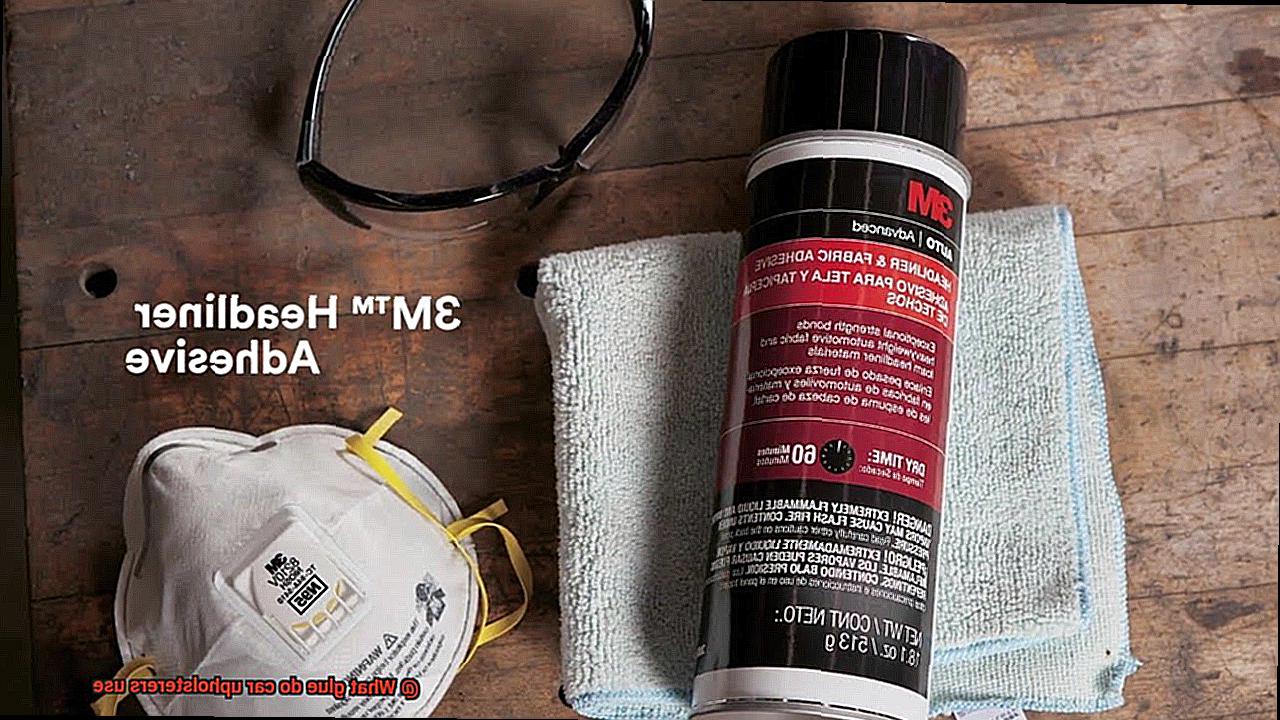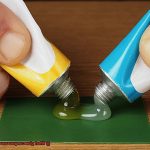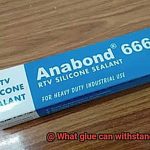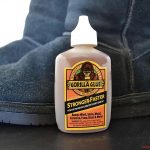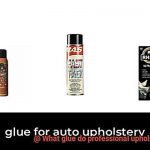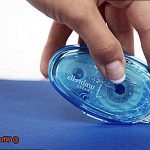Ever wondered how those luxurious seats and sleek dashboard facades come to life? Well, let’s spill the beans on one of the best-kept secrets in auto interiors: the glue used by car upholsterers.
This glue is like a superhero, creating strong bonds between fabric and foam, securing delicate trims and panels, and giving that flawless finish. In this post, we’ll dive into the different types of glue used by car upholsterers, revealing their unique properties and how they help create automotive works of art.
So, buckle up and let’s explore the sticky world of car upholstery glue.
Types of Glue Used in Car Upholstery
Contents
- 1 Types of Glue Used in Car Upholstery
- 1.1 Trim Adhesive: The Super Strong Bond
- 1.2 Fabric Glue: The Seam Saver
- 1.3 Vinyl Adhesive: The Tough Guy
- 1.4 Epoxy Adhesive: The Heavy-Duty Hero
- 1.5 Contact Adhesive
- 1.6 Spray Adhesive
- 1.7 Trim Adhesives: The Perfect Bond for Every Surface
- 1.8 Headliner Adhesives: A Strong Hold from Roof to Floor
- 1.9 Specialized Automotive Adhesives: Tailored Solutions for Every Need
- 1.10 Other Glues Used for Specific Requirements
- 2 Factors to Consider When Choosing the Right Glue
- 3 Safety Precautions When Using Glue in Car Upholstery
- 4 The Benefits of Using the Right Glue for Car Upholstery
- 5 Tips for Successfully Applying and Bonding with Glue for Car Upholstery
- 6 Troubleshooting Common Issues When Working with Glue in Car Upholstery
- 7 Conclusion
Car upholstery requires the use of specific glues to ensure a professional and durable finish. Car upholsterers rely on various types of glue, each with its unique properties and benefits. This article will delve into the different types of glue commonly used in car upholstery and how they contribute to the overall success of the project.
Trim Adhesive: The Super Strong Bond
Trim adhesive, also known as contact adhesive, is a beloved glue among car upholsterers for its exceptional bonding strength and versatility. It is the go-to choice for attaching fabric, vinyl, or leather upholstery to various surfaces within the vehicle, including seats, door panels, and headliners.
Applying trim adhesive involves coating both surfaces to be bonded, allowing it to dry until tacky, and then firmly pressing them together. The result is a secure bond that withstands heat, moisture, and everyday wear and tear.
Fabric Glue: The Seam Saver
Fabric glue is specifically formulated for bonding fabric materials together. It plays a crucial role in car upholstery by attaching fabric panels or repairing tears and seams. Typically water-based and drying clear, fabric glue ensures an aesthetically pleasing result while maintaining the fabric’s natural texture.
Vinyl Adhesive: The Tough Guy
Vinyl adhesive is specifically designed to bond vinyl materials effectively. This type of glue creates a strong and durable bond that can withstand the rigorous demands of automotive use. Car upholsterers rely on vinyl adhesive for repairing or replacing vinyl seats or interior panels. It is usually available in tubes or canisters and is applied using a brush or spatula.
Epoxy Adhesive: The Heavy-Duty Hero
When it comes to heavy-duty upholstery projects, epoxy adhesive takes the spotlight. Comprised of a resin and a hardener, epoxy adhesive is known for its exceptional strength and durability. Car upholsterers turn to epoxy adhesive to bond metal or plastic components in the car’s interior, such as brackets or trim pieces.
Contact Adhesive
Contact adhesive, the glue of choice for many professionals in the car upholstery industry, offers a myriad of advantages that make it indispensable for any project. Its versatility is unparalleled, as it can bond together a wide range of materials, including fabric, leather, vinyl, and foam. Whether you’re reupholstering seats or adding some flair to your dashboard, contact adhesive has got you covered.
But its versatility is just the beginning. Contact adhesive boasts a quick drying time, unlike other glues that require clamping or long drying periods. When the surfaces are pressed together, contact adhesive forms an instant bond, allowing you to complete your project in no time and proudly display your craftsmanship.
Durability is another key feature of contact adhesive. With cars exposed to extreme conditions like scorching heat and torrential downpours, a glue that can withstand these challenges is crucial. Contact adhesive is designed to resist heat and moisture, ensuring that your upholstery stays intact regardless of what Mother Nature throws at it.
To ensure optimal adhesion, keep a few things in mind before applying contact adhesive. Make sure the surfaces are clean and free from dirt or grease that may hinder the bonding process. Apply a thin and even layer of adhesive on both surfaces for a strong bond. And don’t rush – let the adhesive dry partially before pressing the surfaces together for maximum effectiveness.
Spray Adhesive
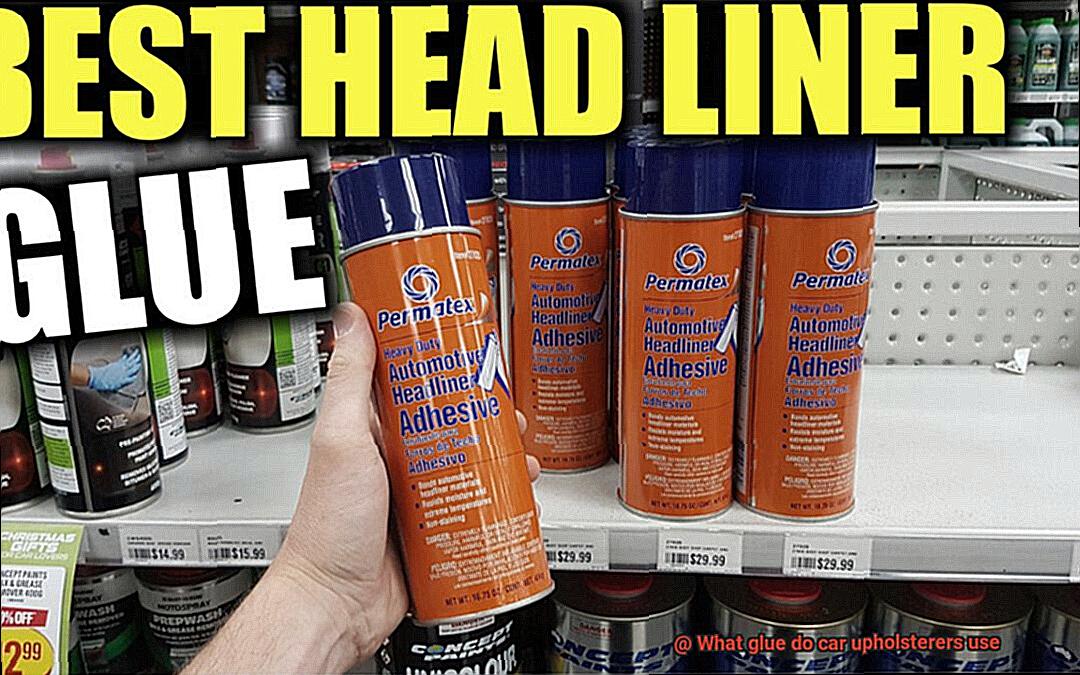
Spray adhesive – the unsung hero of car upholstery projects. As any car enthusiast or meticulous vehicle owner knows, the interior can make or break the overall look and feel of a car. And that’s where spray adhesive steps in – a powerful adhesive that has become the go-to choice for car upholsterers worldwide.
But what makes spray adhesive so popular? Let’s delve into the details and uncover its secrets:
- Effortless application: Say goodbye to laboriously spreading glue on surfaces. With spray adhesive, you can simply point and shoot. The aerosol can delivers an even and effortless coverage, saving you precious time and energy. No more sticky messes or uneven applications.
- Versatile bonding: From fabric to vinyl, leather to foam, spray adhesive has got you covered. It forms a robust and secure bond between different materials, ensuring your upholstery stays intact even when faced with heavy use or extreme conditions. No matter what combination of materials you’re working with, spray adhesive will keep them firmly together.
- Tailored bond strength: Not all projects require the same level of adhesion. Spray adhesives come in a variety of formulations, offering different levels of bond strength to suit your specific needs. Whether you’re dealing with heavy-duty materials or areas that will face significant stress, you can choose the appropriate strength for optimal results.
- Repositioning flexibility: Unlike some glues that instantly create a permanent bond upon contact, spray adhesive provides a temporary bond initially. This unique feature allows you to reposition and adjust the materials as needed before the bond fully sets. Perfect for aligning patterns or ensuring precise placement of upholstery pieces – it’s like having a second chance at perfection.
- Selecting the perfect product: Remember, not all spray adhesives are created equal. When choosing a spray adhesive for your automotive projects, look for one specifically designed for this purpose. These specialized adhesives are formulated to withstand the unique demands of car interiors. Consider factors like drying time, heat resistance, and compatibility with different materials to ensure you’re making the right choice.
With spray adhesive by your side, you can achieve professional-quality results in your car upholstery projects. Transform your car’s interior into a work of art, knowing that spray adhesive is the secret weapon behind its flawless appearance.
Trim Adhesives: The Perfect Bond for Every Surface
When it comes to securing door panels, headliners, and dashboard components, trim adhesives are the go-to solution. These adhesives can bond a wide range of materials such as fabric, vinyl, leather, and foam to different surfaces in a car’s interior. Available in convenient aerosol cans or tubes, trim adhesives offer easy application and precise control for seamless results.
Headliner Adhesives: A Strong Hold from Roof to Floor
Headliner adhesives are specially formulated to bond headliner fabric to the roof of a car. With their robust and durable bond, these adhesives prevent sagging or detachment even under daily usage. Whether you prefer the quick application of spray cans or the controlled precision of brush-on formulas, headliner adhesives are essential for maintaining a polished interior appearance.
Specialized Automotive Adhesives: Tailored Solutions for Every Need
Beyond trim and headliner adhesives, there are specialized options available for specific applications. Need to repair or replace your car’s carpet? There’s an adhesive for that. Bonding rubber seals and gaskets? There’s an adhesive for that too. Even securing emblems and badges on the exterior of your vehicle has a specialized adhesive. These adhesives offer exceptional bonding properties and resistance to heat, cold, moisture, and chemicals commonly found in car environments.

Other Glues Used for Specific Requirements
In this fascinating realm, glues become superheroes, equipped with unique powers to tackle different challenges. Let’s dive in and explore these amazing glues.
First in our lineup is the mighty heat-resistant glue. Picture this: scorching hot temperatures during those summer road trips. To ensure that your upholstery stays put, upholsterers rely on heat-resistant glue. This extraordinary adhesive can handle intense heat without losing its stickiness, keeping your interior intact even in the hottest of conditions.
Next up, we have the invincible waterproof glue. Accidental spills or rainy days won’t stand a chance against this superhero adhesive. It creates an impenetrable barrier, repelling water and keeping your upholstery dry. Say goodbye to nasty mold and mildew growth.
Now, let’s talk about the powerful foam adhesive. When it comes to attaching foam padding to various surfaces like metal, plastic, or fabric, foam adhesive is the go-to choice. It forms an unbreakable bond that keeps your foam securely in place, ensuring a comfortable and long-lasting seating experience.
Leather enthusiasts, rejoice. The leather adhesive is here to save the day. Specially formulated to bond leather pieces together or attach leather to other materials, this glue can withstand the toughest stress and strain placed on automotive leather. Your luxurious leather upholstery will remain flawless for years to come.
But wait, there’s more. Enter the versatile fabric adhesive. Fabrics used in car upholstery require a special kind of glue – one that securely bonds them without causing any damage. Fabric adhesive does exactly that. It provides a robust yet flexible bond, keeping your fabric firmly attached while maintaining its flexibility for a comfortable ride.
Last but certainly not least, we have the resilient trim adhesive. Those fancy trims and moldings in your car’s interior? They owe their secure attachment to trim adhesive. This extraordinary glue is formulated to withstand vibrations and the rigors of everyday use, ensuring that your trims stay in place no matter how bumpy the road gets.
Factors to Consider When Choosing the Right Glue
When it comes to choosing the right glue for your car upholstery projects, there are several factors that should be considered. Let’s take a closer look at these factors to ensure you make the best choice for your needs.
First and foremost, you need to consider the adhesive type. There are various types of adhesives available, each with its own unique properties. Contact adhesive is the go-to choice for car upholsterers as it provides a strong and durable bond. It’s also heat resistant, which is crucial for car interiors exposed to extreme temperatures. Spray adhesive, on the other hand, is convenient and allows for quick application. And let’s not forget about epoxy adhesive, known for its exceptional strength and perfect for heavy-duty applications in car upholstery.
Next on our list is the bonding surface. Car upholstery is made of different materials like fabric, vinyl, leather, and foam. Each material requires a specific type of glue for optimal bonding. Fabric glue is formulated to bond fabric materials, while vinyl glue is designed to adhere to vinyl surfaces. Choosing a glue that is compatible with your specific material ensures a strong and long-lasting bond.
Drying time is another essential factor to consider. Some glues dry faster than others, allowing you to complete your projects quickly. However, fast-drying glues may not give you enough time for adjustments or repositioning once applied. Slower-drying glues offer more flexibility in terms of repositioning but require longer curing times before reaching their full strength.
Now let’s talk about the application method. Glues come in tubes or bottles with applicator tips or can be found in aerosol cans for spray-on application. The choice depends on your project’s requirements and personal preference. Tubes or bottles provide more control and precision for smaller areas or detailed work, while spray-on adhesives are ideal for larger surfaces or when a quick and even application is needed.
Durability and flexibility are crucial when it comes to car upholstery. Your glue should be able to withstand constant wear and tear, exposure to sunlight, temperature changes, and regular use. Look for glues labeled as “automotive grade” or “heavy-duty” to ensure they can handle the demands of car upholstery.
Last but not least, safety precautions should always be considered. Some adhesives emit strong fumes or require proper ventilation during application. Others may contain harmful chemicals that can irritate the skin or eyes. Always read the instructions and take the necessary precautions to protect yourself.
Safety Precautions When Using Glue in Car Upholstery
When it comes to car upholstery projects, glue is a crucial tool for achieving a professional and long-lasting finish. However, it’s important to prioritize safety while working with adhesive products. In this article, we will discuss the key safety precautions to consider when using glue in car upholstery.
Work in a well-ventilated area:
To protect your respiratory system from potential health risks associated with glue fumes, ensure you work in a well-ventilated space. Open windows or doors, or utilize fans to promote air circulation. Fresh air is essential for a safe and healthy working environment.
Wear personal protective equipment (PPE):
Shield yourself from any potential accidents by wearing the appropriate personal protective equipment. Safety goggles or glasses will protect your eyes from splashes or drips that may occur during application. Disposable gloves will prevent direct contact with the adhesive, reducing the risk of skin irritation or allergic reactions.
Follow manufacturer’s instructions:
Each adhesive product may have specific application instructions and recommended safety measures outlined by the manufacturer. Take the time to carefully read and follow these instructions to ensure safe and effective use of the glue. Following the guidelines will help you achieve optimal results while minimizing risks.
Keep glue out of reach:
Store glue containers in a secure location away from children and pets. Some glues can be toxic if ingested, so it is crucial to keep them out of reach and properly sealed at all times. Promptly clean up any spills or drips to avoid accidental contact.
Avoid open flames and smoking:
Many glues are highly flammable and can pose a fire hazard. To mitigate this risk, work in designated non-smoking areas and keep all potential ignition sources away from the adhesive. Remember, safety always comes first.
Proper disposal:
Dispose of used glue containers and other materials responsibly. Some adhesives may require special disposal procedures due to their chemical composition. Contact your local waste management facility or follow the instructions provided by the glue manufacturer to ensure proper disposal. Let’s do our part in protecting our environment.
The Benefits of Using the Right Glue for Car Upholstery
When it comes to car upholstery, using the right glue is not just about achieving a flawless finish – it’s about ensuring long-lasting durability and safety. Choosing the appropriate adhesive for your car upholstery project can make all the difference in the world. In this article, we will delve into the advantages of using the right glue and why it is crucial for a professional and reliable result.
Strong Bond for Enduring Upholstery:
The right glue ensures a strong bond between the upholstery fabric and the underlying material. This is essential as car interiors are subject to constant use, movement, and friction. With the correct adhesive, you can rest assured that your upholstery will stay securely attached, even under rigorous conditions.
Upholstery Aesthetics:
Improperly secured fabric can develop unsightly wrinkles, sagging, or puckering over time. By using the appropriate glue, you can maintain a taut and smooth appearance for your car’s interior. Not only will this keep your vehicle looking stylish, but it will also provide maximum comfort for passengers.
Durability and Longevity:
Car interiors are exposed to a barrage of environmental factors such as scorching sunlight, relentless heat, moisture from rain or spills, and temperature fluctuations. The right adhesive will be resistant to these conditions, ensuring that your upholstery remains securely attached without deteriorating or degrading over time. This means fewer repairs and replacements down the road.
Easy Repairs and Replacements:
Using the correct adhesive initially will make future repairs or replacements easier. If a section of upholstery needs fixing or replacing, having used the right glue will allow for easier removal without causing significant damage to the underlying materials. This ultimately saves you time and money in future maintenance work.
Safety First:
Adhesives designed specifically for automotive applications undergo rigorous testing to meet safety standards. They are formulated to be flame retardant and resistant to heat and chemical exposure. This ensures that in case of an accident or emergency situation, the upholstery will not release toxic fumes or contribute to the spread of fire, prioritizing the safety of both drivers and passengers.
Tips for Successfully Applying and Bonding with Glue for Car Upholstery
When it comes to car upholstery, choosing the right glue and applying it correctly can make all the difference in achieving a professional and long-lasting result. In this blog post, we will explore some essential tips for successfully applying and bonding with glue for car upholstery. Let’s dive in.
Use the Right Type of Glue:
To ensure a strong bond, it is crucial to choose the right type of glue specifically designed for automotive applications. This specialized glue is formulated to bond well with different upholstery materials commonly found in cars, such as fabric, vinyl, and leather. Be sure to select a glue that is compatible with the specific material you are working with.
Prepare the Surface:
Properly preparing the surface is key to achieving a strong and lasting bond. Thoroughly clean the surface to remove any dirt, dust, or grease that might hinder adhesion. Use a mild detergent or upholstery cleaner and make sure the surface is completely dry before proceeding.
Apply the Glue Evenly:
To create an even and strong bond, apply the glue consistently across the surface. Use a small brush or foam applicator to apply the glue from one end to the other, making sure not to apply too much as it can lead to messy results and longer drying times.
Allow Proper Drying Time:
After applying the glue, be patient and allow sufficient drying time before attempting to bond the upholstery materials together. Different glues have different drying time requirements, so read the instructions on the glue container carefully. Rushing this step can weaken the adhesive bond.
Press Firmly and Evenly:
Once the glue has dried to a tacky state, it’s time to bond the upholstery materials together. Place one piece of material onto the glued surface and press firmly and evenly, ensuring good contact between both surfaces. Use your hands or a roller tool to apply even pressure across the entire bonded area, eliminating air bubbles and ensuring a strong bond.
Allow Proper Curing Time:
After bonding the materials together, it’s important to allow sufficient curing time for the adhesive to fully set. Follow the recommended curing time specified by the glue manufacturer and avoid subjecting the bonded area to stress or strain during this period.
Troubleshooting Common Issues When Working with Glue in Car Upholstery
Glue is the unsung hero in the world of car upholstery, holding everything together. But working with glue can sometimes be a sticky situation, pun intended. In this article, we’ll explore common issues that arise when using glue in car upholstery and provide a step-by-step guide on troubleshooting them.
Insufficient Bonding:
Problem: Weak bond between upholstery material and surface, leading to peeling or loosening over time.
Solution:
- Use the right type of glue for your materials. Automotive upholstery requires specific adhesive.
- Apply enough pressure during bonding and allow sufficient drying time as per manufacturer’s instructions.
Overbonding:
Problem: Excessive glue application leads to visible residue or adhesive seepage through fabric.
Solution:
- Apply glue sparingly and evenly. Use a small brush or applicator for control.
- Avoid excessive squeezing of glue tube.
Incompatibility with Materials:
Problem: Adhesive does not adhere well to specific fabric or leather.
Solution:
- Check manufacturer’s recommendations for compatibility before using glue.
- Conduct a small test on hidden area to ensure adhesion without damage or discoloration.
Difficulty in Application:
Problem: Some glues are challenging to apply, especially in intricate or hard-to-reach areas.
Solution:
- Use glue applicators or brushes designed for automotive upholstery.
- Take your time and work patiently for thorough coverage and proper adhesion.
Curing Time:
Problem: Insufficient curing time leads to weakened bonds that may fail over time.
Solution:
- Read manufacturer’s instructions and allow adequate curing time.
- Patience is key, resist the urge to rush the process.
Juh39LHkFus” >
Conclusion
Car upholsterers rely on a specialized adhesive known as automotive trim adhesive.
This glue is specifically formulated to bond various materials used in car interiors, such as fabric, leather, vinyl, and foam. It possesses exceptional strength and durability, ensuring that the upholstery remains securely attached even under the stress of everyday use.
With its ability to withstand extreme temperatures and resist moisture, this glue ensures that the interior of your car maintains its pristine appearance for years to come.

